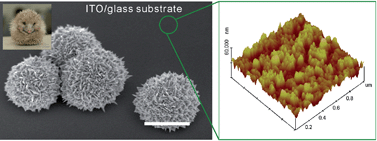Substrate surface roughness-dependent 3-D complex nanoarchitectures of gold particles from directed electrodeposition†
Abstract
The effects of substrate surface roughness on the directed electrodeposition of gold 3-D complex nanoarchitectures with hedgehog-shaped, cauliflower-shaped, or bunch-of-grapes-shaped surface features are revealed. The surface morphology of the synthesized particles was observed using a scanning electron microscope (


 Please wait while we load your content...
Please wait while we load your content...